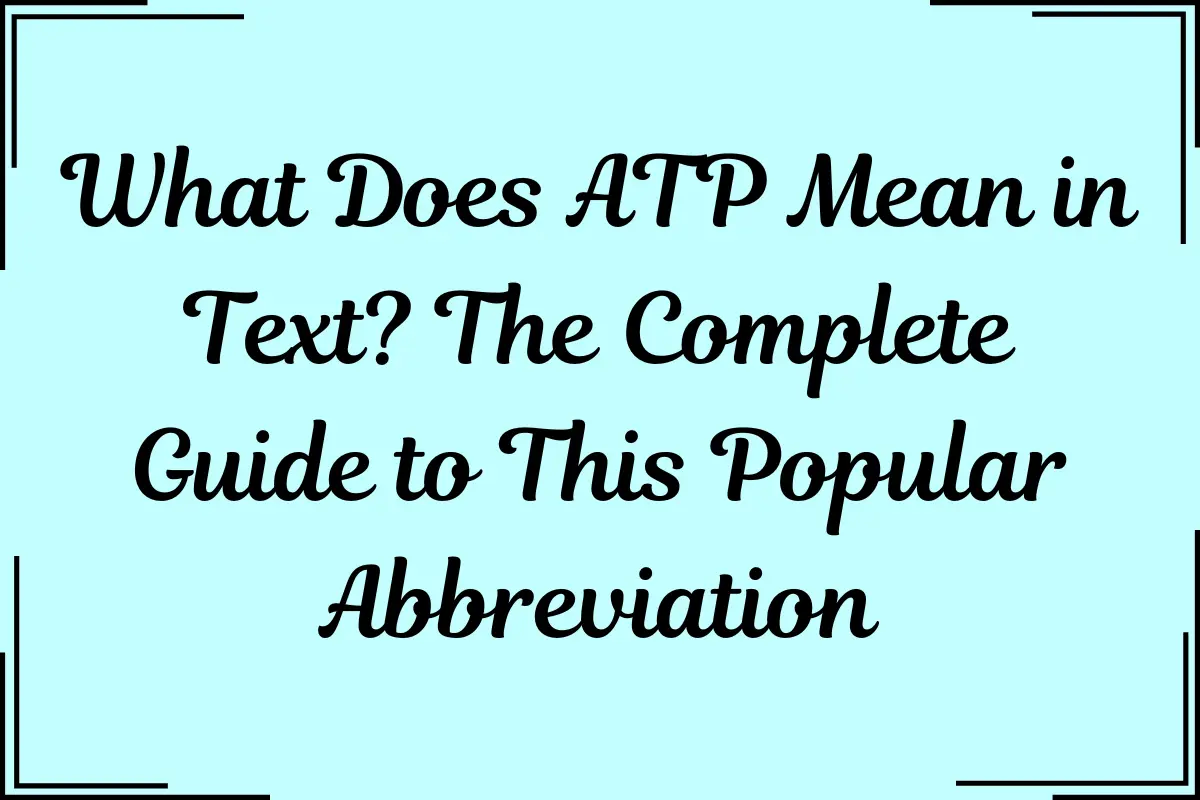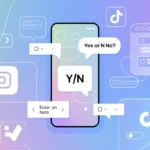Have you ever opened your phone to see a message that simply says:
ATP I’m over it.
…and thought, What does ATP mean?
You’re not alone.
Text abbreviations pop up in conversations daily—especially on Snapchat, TikTok, Instagram, and Twitter. They can leave you puzzled if you’re not up to date.
ATP is one of those shorthand terms that’s become part of everyday online language. But don’t worry—this guide will explain everything you need to know about ATP, so you’ll never feel out of the loop again.
We’ll explore:
- What ATP means (yes, it has more than one meaning!)
- Where it comes from
- Why people use it
- How to respond when you see it
- When NOT to use it
- Real-life examples and common mistakes
Let’s decode this little three-letter mystery together.
What Does ATP Stand For in Texting?
The most common meaning of ATP in texting is:
✅ At This Point
It’s used when someone wants to express what they feel or think right now.
Imagine ATP as a time marker—like saying:
- At this point, I can’t be bothered.
- At this point, I’m just here for the snacks.
- At this point, I’m doing my best.
But here’s the catch: ATP can also stand for other things, depending on the context. Here are the main definitions you’ll see:
| Abbreviation | Meaning | Where You’ll See It |
|---|---|---|
| ATP | At This Point | Social media, texts, chats |
| ATP | Answer The Phone | Urgent texts, calls |
| ATP | All The People | Rare, mostly group messages |
| ATP | Adenosine Triphosphate | Science class, academic writing |
In 90% of casual texting, ATP = At This Point.
But whenever you’re unsure, read the rest of the message for clues.
A Quick History: How Did ATP Become Slang?
ATP didn’t start with social media. The abbreviation grew out of:
- SMS texting in the early 2000s, when people wanted to save time (and characters).
- Twitter, where every letter counts in a tweet.
- Snapchat, where disappearing messages encourage shorter communication.
Over time, abbreviations like ATP became part of how younger generations, especially Gen Z (roughly born between 1997–2012), express themselves online.
So if you’re a parent, teacher, or anyone over 30 wondering, “Why can’t they just write the words?”—that’s why! It’s all about quick, efficient connection.
How Do People Use ATP in Text?
Let’s look at real examples to see ATP in action:
Scenario 1: Venting
Friend: Are you still trying to fix the project?
You: ATP, I’m giving up.
Scenario 2: Making a Decision
Friend: Coming to the movie?
You: ATP, probably not.
Scenario 3: Positive Update
Friend: How’s everything going?
You: ATP, I’m feeling really good.
Scenario 4: Answer The Phone (Urgent)
Friend: ATP now, it’s important!
Scenario 5: All The People (Rare)
Friend: Who’s going to the party?
You: ATP are showing up.
✅ Tip: If you see ATP in an emergency message, assume it might mean Answer The Phone. Otherwise, At This Point is almost always correct.
Why Do People Prefer Abbreviations Like ATP?
Here are the main reasons:
✨ Speed – Typing ATP saves time when chatting fast.
✨ Character Limits – Apps like Twitter still limit word counts.
✨ Trendy Communication – Shortcuts feel more casual and modern.
✨ Shared Understanding – Among teens and young adults, abbreviations create a sense of belonging.
This is why ATP appears in captions, DMs, and group chats all the time.
Where Do You See ATP Most Often?
1. Snapchat
- Captions or disappearing messages:
ATP, I just want to nap.
2. TikTok
- Video captions or comment sections:
ATP I’m convinced he’s lying 😂
3. Instagram
- Stories or DMs:
ATP, I’m just vibing.
4. Twitter
- Short updates or rants:
ATP it is what it is.
Who Uses ATP?
ATP is most common among:
✅ Teens and young adults (Gen Z)
✅ Social media influencers
✅ Online communities like fandom groups
✅ Some Millennials (late 20s–30s)
It’s less common in formal work environments, though some startups use casual slang in team chats.
ATP vs. Other Slang You Should Know
ATP isn’t alone—there’s a whole universe of abbreviations you’ll see online. Here are a few popular ones to learn alongside ATP:
| Abbreviation | Meaning |
|---|---|
| IDC | I Don’t Care |
| TBH | To Be Honest |
| IDK | I Don’t Know |
| RN | Right Now |
| IMO | In My Opinion |
| LMK | Let Me Know |
| SMH | Shaking My Head |
✅ Pro Tip: If you’re unsure, look it up on Urban Dictionary or ask the sender.
Common Misunderstandings About ATP
Because ATP can mean different things, misunderstandings happen.
Example:
- ATP Answer The Phone!
If you think it means “At This Point,” you might ignore an urgent call.
How to avoid confusion:
- Check the context.
- If it’s about a call or urgency, assume Answer The Phone.
- If it’s casual or emotional, it’s At This Point.
- When in doubt, ask the person to clarify.
Should You Use ATP?
If you’re comfortable with casual texting, go ahead!
✅ Use ATP in:
- Group chats with friends
- Social media posts
- DMs with people your age
🚫 Avoid ATP in:
- Professional emails
- Messages to clients or older coworkers
- Formal writing
When in doubt, write out At This Point to be clear.
ATP in Professional Settings
While ATP is mainly casual, you might see it in relaxed workplaces, especially in tech or creative industries.
Example:
- ATP, we should reconsider the campaign timeline.
But remember—clarity is more important than trends in professional communication.
Cultural and Generational Notes
🌍 Region: ATP is mainly used in the United States and Canada.
🌍 Age: Younger users (under 25) use it more frequently.
🌍 Tone: ATP can be neutral (ATP, I’m here), positive (ATP I’m excited), or negative (ATP I’m done).
✅ Tip: Pay attention to the mood of the message.
Additional Example Scenarios
Positive:
ATP, I’m feeling super motivated today!
Neutral:
ATP, I’m just waiting to see what happens.
Negative:
ATP, I can’t deal with this anymore.
Adding variety helps show how flexible ATP really is.
Conclusion: ATP in Text—Simple But Important
ATP may be a tiny abbreviation, but it packs a lot of meaning depending on context.
✅ Quick Recap:
- ATP most often means At This Point.
- It can also mean Answer The Phone or Adenosine Triphosphate.
- Always read carefully to avoid confusion.
- Use it in casual settings, but skip it in professional writing.











